
|
Advanced Strategies for Two Not Touch PuzzlesA tutorial by Krazydad
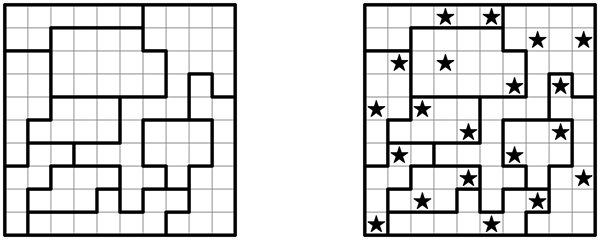
Here is a collection of advanced strategies for Two Not Touch (also known as Star Battle), partially based on correspondence I've received for my puzzles in The New York Times.
Happy puzzling!
If you are new to these puzzles, go check out my Intro Tutorial before proceeding further; the Intermediate Tutorial has another fully-worked example that may help you get the hang of solving these. NOTE: In this tutorial, I use the words square and cell interchangeably. The word container is used to refer to rows, columns, and bolded regions. These first two rules have been informally covered in the previous tutorials, but I'll state them more formally here:
RULE OF FINISHED CONTAINERS If a container has only one possible set of locations where you can place its remaining stars, place the stars there. If a container has all of its stars placed, then the rest of it can be eliminated. This is the most basic rule of Two Not Touch, and is the only rule you need to solve the easiest puzzles. We've used it extensively in the previous two tutorials.
RULE OF NOSY NEIGHBORS If a set of cells is known to contain one or more stars, any exterior square adjacent to all the cells of that set can be eliminated. After a time, you will begin to recognize patterns which are the result of this rule. For example, in the U-shaped region below, there is an exterior square that is adjacent to all the cells, and it can be eliminated as shown.

RULE OF SELFISH ROOMMATES If a set of cells is known to contain two or more stars, any cell in the set adjacent to all other cells in the set can be eliminated. For example, if a container is a 3x3 block, the center cell can always be eliminated, because it is adjacent to all the other cells in the container.
 The above two rules can be replaced by a single generalized rule:
RULE OF CROWDING If any cell is adjacent to enough squares in a group of cells known to contain a star such that it prevents us from placing all remaining stars in that group, it can be eliminated. For example, if there are 5 cells in a row that are known to contain two stars, there are two cells on either side that can't be used, because they prevent us from placing those stars.
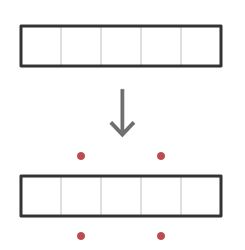
RULE OF FOUR-SQUARES In a N-star puzzle, if an unsolved region can be divided into N discrete sub-regions which each fit into a 2x2 area (a four-square), then each sub-region must contain exactly one star. Note that Two Not Touch as published in The New York Times is a 2-star puzzle, so for these puzzles, look for regions that can be subdivided into two discrete four-square sub-regions.
RULE OF CLUMPS Divide each container into discrete clumps that must contain one star, using the four-square technique. If the number of clumps is equal to the count of remaining stars for that container, we can treat each clump as its own one-star container, applying the Rule of Crowding and the Rule of Finished Containers to them individually. In the following example, I use the Rule of Clumps to split the region into two parts that each fit into a four-square. We can then use the Rule of Crowding to eliminate external squares that would crowd each of those sub-regions.
 By combining each of the above rules, there are a lot of eliminations that can be made, especially around regions that are already small and crowded to begin with. Here are a number of common small shapes:
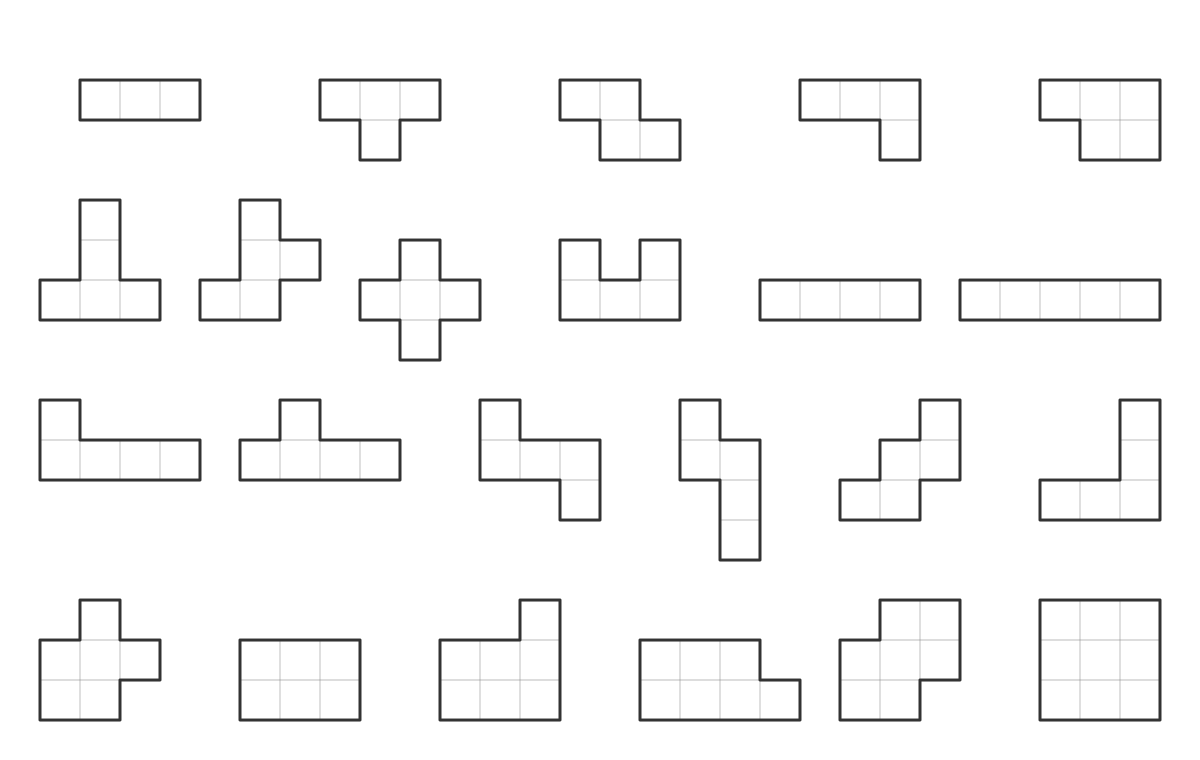 ...and the eliminations you can make with these regions, including some that can immediately have stars placed.
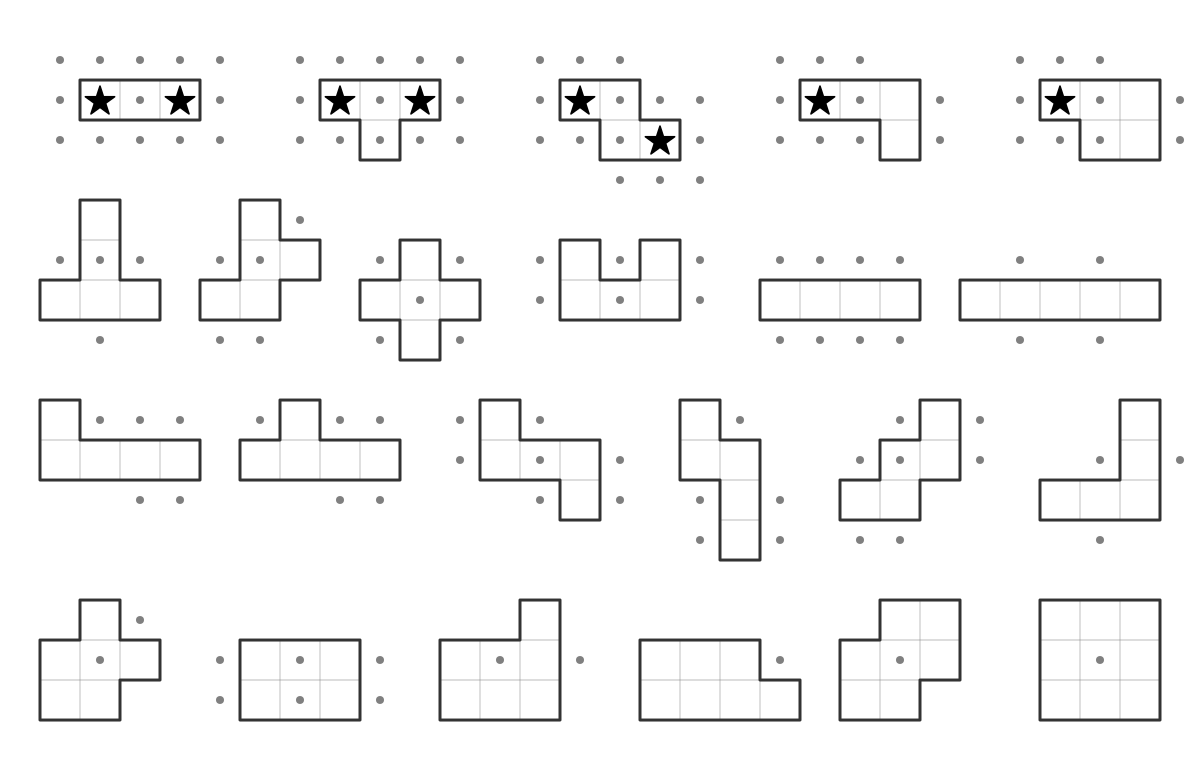
RULE OF CONTAINER CABALS If two rows are fully occupied by two regions (which also extend outside the rows), then solving the rows would completely solve the regions. All the other squares in those regions — the ones that are not part of the two rows — can be safely eliminated. The regions form a "cabal" which monopolizes the rows. Conversely, if two regions are fully occupied by two rows which also extend outside the regions, the extra squares in the rows can be eliminated. This idea can be generalized to any number of rows/columns overlapping any number of regions (as long as the number of each group is the same — you can do it with three rows and three regions, but not with three rows and four regions). Note that this rule does not work with partially solved containers that already have stars outside the intersection area. Here's an example puzzle from the Friday, April 24th, 2020 edition of The New York Times. A reader sent me the following partially solved grid: 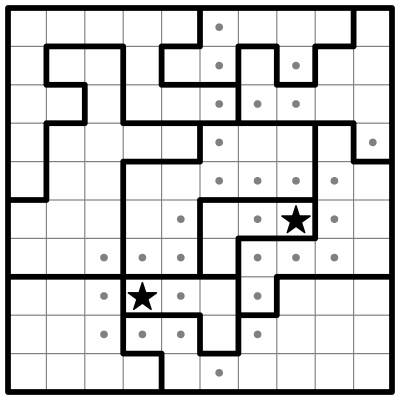 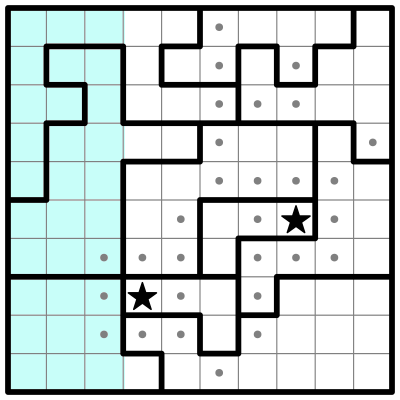 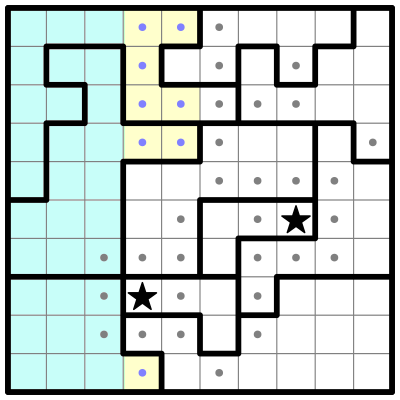
RULE OF CONTAINER CONSUMPTION This rule applies to 2-star puzzles: If part of a container must make use of at least one star, the rest of the container may contain at most one other star. Seems obvious, no?
Now I'll combine some of the above rules in this partially solved example from the Saturday, April 25th, 2020 edition of The New York Times:
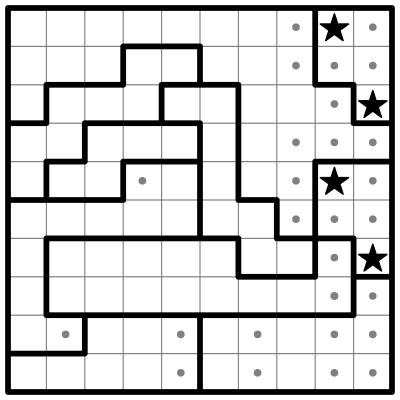 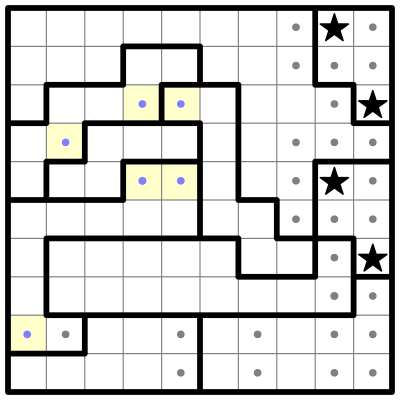 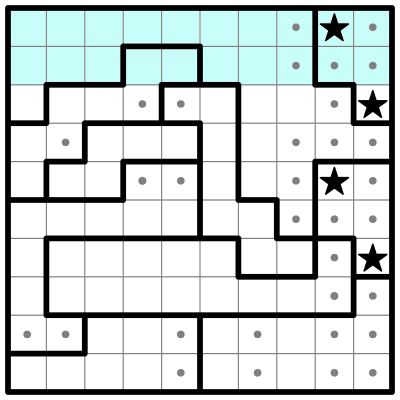 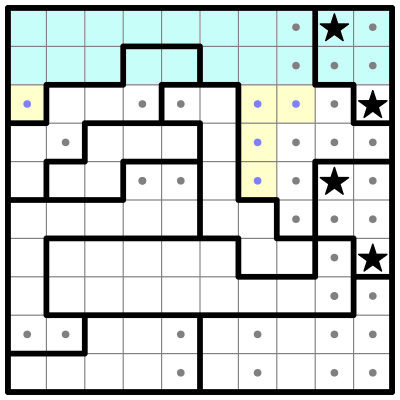 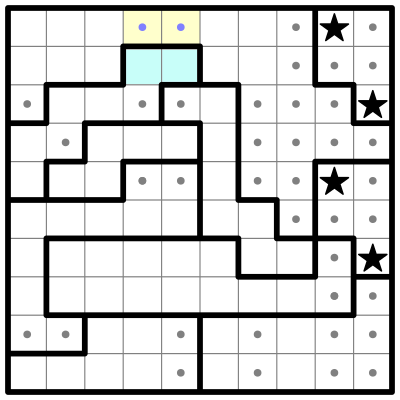 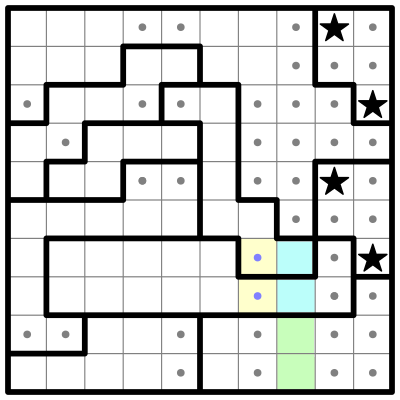 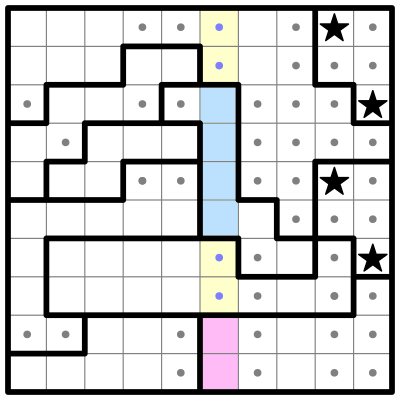 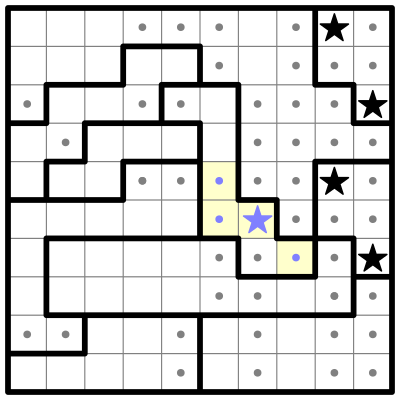
Privacy Policy Contact Krazydad Discord server |